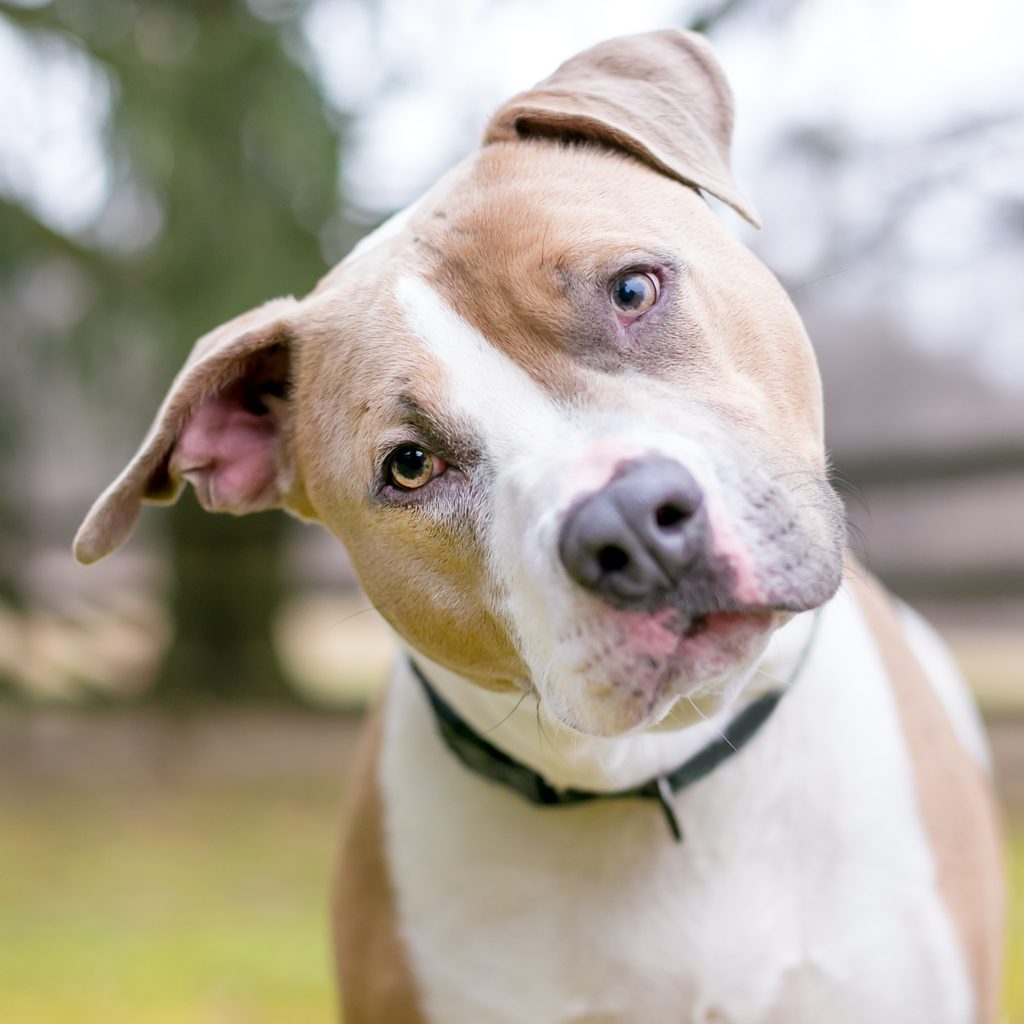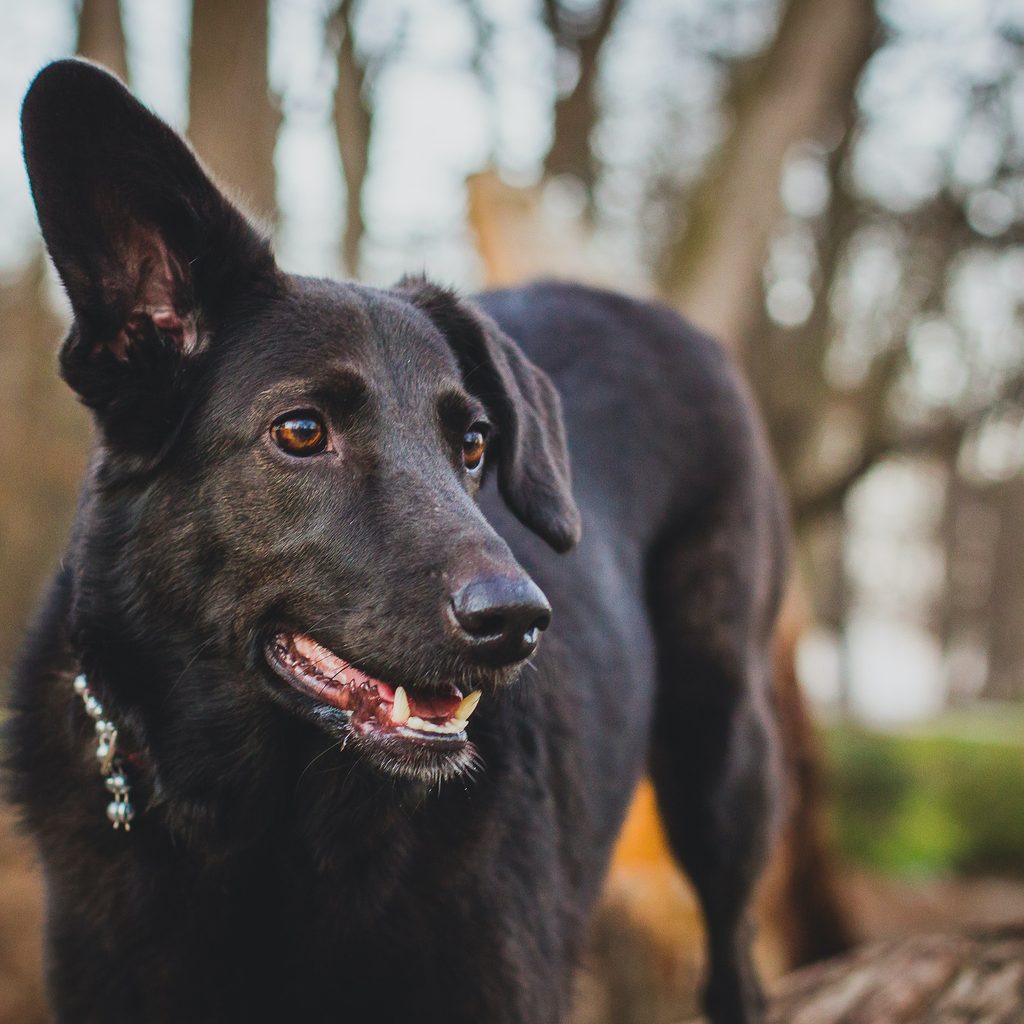Have you noticed what happens when your dog hears something interesting? Whether they stay lying down or get up to investigate the sound, your pup’s ears will perk up. Dogs with upright ears may turn them to get a better listen — all while you’re trying to hear the sound at all!
Canine hearing is no joke. It’s one of the five senses that helps your furry friend navigate the world, but it isn’t everything! There are plenty of dogs who are hard of hearing or completely deaf, and they do just fine. Losing hearing later in life can definitely be an adjustment, but with a little time, patience, and encouragement, life can be equally as fun and fulfilling. That being said, here’s what you’ll want to know about dogs with highly sensitive ears.

Are dogs’ ears sensitive to touch and sound?
If you’ve heard that dogs’ hearing is more sensitive than humans’, it’s for a good reason. The sound experts at Hearing Sense report that canines can detect sounds up to twice the pitch and four times the distance than people can. Dogs can also hear sounds at a much higher pitch — up to 45,000 vibrations per second. For reference, humans can only detect 23,000 vibrations per second (via Louisiana State University).
Why are dogs’ ears sensitive? Where humans only have six muscles controlling the ear and surrounding area, notes Hearing Sense, canines can have up to 18. This allows the ears to move and rotate however is needed to funnel sound from nearly any direction.
When it comes to touching your dog’s ears, you’ll likely notice just as much sensitivity. Though touching the ear should not be painful, notes canine behavior consultant Adrienne Farricelli, it can be euphoric, ticklish, or uncomfortable during an ear infection. This is due to the high concentration of nerve endings in the ear, including those of the vagus nerve. This nerve is responsible for regulating the body’s nervous system (humans have this, too) and can be helpful in interrupting the fight or flight response (via Adrienne Farricelli).
So, pay extra attention to your dog’s reaction next time you give them an ear rub. If they enjoy it, you’ll be rewarded with one happy pup. If they’re not the kind to like their ears touched though, you don’t need to be concerned. It’s not necessarily a sign of ear infection or pain; it could just be a preference. Of course, any change in behavior — like pawing the ears or an unusual reaction to having them touched — should be checked out by a veterinarian.

What breed has the most sensitive ears?
Whether your dog has upright or floppy ears, their anatomy is generally the same. Still, some dogs tend to be more sensitive to sound than others. A dog of any breed has the potential to have sensitive hearing (or not to have it), so even though the breed is not the only thing to consider, it’s worth thinking over.
Borrett Animal Hospital lists German shepherds, collies, and golden retrievers as the breeds with the best hearing, while the Veterinary Centers of America give this title to working and herding breeds as a whole. The Working Group includes breeds such as:
- Bernese mountain dog
- Boxer
- Great Dane
- Mastiff
- Rottweiler
- Siberian husky
These breeds are just a few that make up the Herding Group:
- Australian shepherd
- Border collie
- German shepherd
- Old English sheepdog
- Pembroke Welsh corgi
- Shetland sheepdog
Alternatively, a 2015 research study found three totally different breeds to be the most reactive to sound: Norwegian buhund, Irish soft-coated wheaten terrier, and lagotto Romagnolo. This goes to show that breed is not everything when estimating a pup’s sound sensitivity levels.
Personality also matters when it comes to sound detection. Some dogs are naturally more attentive and alert, which is why some breeds are more likely to make great hearing service dogs. Helping hearing impaired people navigate the world takes attention to sound, surroundings, and the person, so you can imagine how strict the requirements can be. Cocker spaniels, poodles, Labrador retrievers, and golden retrievers are the breeds that most often make the cut, according to the American Kennel Club.
Of course, your dog may not have hearing as sharp as a tack just because they belong to a breed on any of these lists. You could also have a different breed or a mixed breed pup who hears better than any other of their four-legged friends; there is no one rule! One thing is pretty likely though: Your best buddy can probably hear a lot better than you can.



